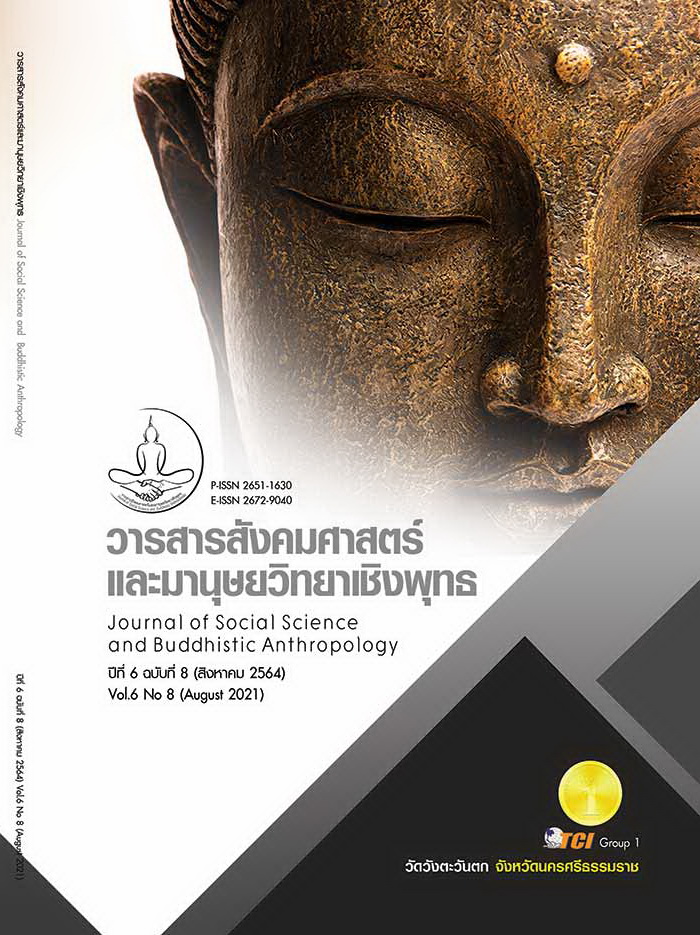EFFECT OF SELF - BREAST MASSAGE PROGRAM ON MILK EJECTION OF CESAREAN MOTHERS
Keywords:
Self-Breast Massage Program, Milk Ejection, Cesarean MothersAbstract
The objectives of this research article was to compare the mean milk flow scores among caesarean mothers between groups who received the manual breast massage program and the group receiving regular nursing care. There was a two - group research model to measure the results after the experiment. The sample was cesarean mothers who received antenatal services, maternity and postpartum rehabilitation at a hospital in the south. A sample of 34 simple random samples was selected that met the specified criteria. It was divided into the experimental group and the control group, each of which was 17 persons. The experimental group received a manual breast massage program. The control group received regular nursing care. Collect information using a personal record form manual breast massage record and milk flow assessment form. The instrument passed a content straightforward check by three experts and the content accuracy index of .80 was tested. The trial was performed on 20 cesarean mothers with a value of .90. Data were analyzed by using frequency, percentage, mean, standard deviation, Mann - Whitney test. The results showed that cesarean mothers who received the manual breast massage program had a higher mean score of milk flow after 24 and 48 hours than those who received regular nursing care with statistical significance (Z = 3.493 p = 0.000), (Z = 3.431 p = 0.001) respectively. The results of this study found that manual breast massage had an effect on milk flow, improving milk flow. Therefore, the breast self - massage program should be applied to promote breastfeeding in caesarean mothers.
References
กนกวรรณ โคตรสังข์ และคณะ. (2559). ผลของโปรแกรมการกระตุ้นการหลั่งน้ำนมต่อระยะเวลาการเริ่มไหลของน้ำนม ระยะเวลาการมาของน้ำนมเต็มเต้า และการรับรู้ความสามารถในการเลี้ยงลูกด้วยนมแม่ในมารดาหลังผ่าตัดคลอดบุตรทางหน้าท้อง. วารสารคณะพยาบาลศาสตร์ มหาวิทยาลัยบูรพา, 24(1), 13-26.
กฤษณา ปิงวงศ์ และคณะ. (2563). ประสิทธิผลของการนวดเต้านมต่อการคัดตึงเต้านมในมารดาที่ให้นมบุตร: การทบทวนอย่างเป็นระบบ. พยาบาลสาร, 47(2), 143-155.
จิรนันท์ วีรกุล. (2559). ปัจจัยที่มีความสัมพันธ์ต่อความสำเร็จในการส่งเสริมการเลี้ยงลูกด้วยนมแม่อย่าง เดียวนาน 6 เดือน ในโรงพยาบาลมหาวิทยาลัยนเรศวร. ใน การประชุมวิชาการระดับชาติ “นเรศวรวิจัย” ครั้งที่ 12: วิจัยและนวัตกรรมกับการพัฒนาประเทศ (กลุ่มวิทยาศาสตร์สุขภาพ) (หน้า 46-57). พิษณุโลก: มหาวิทยาลัยนเรศวร.
นวพร มามาก และกมลรัตน์ เทอร์เนอร์. (2559). บทบาทพยาบาลกับการส่งเสริมการมีส่วนร่วมของสามีหรือญาติเพื่อความสำเร็จในการเลี้ยงลูกด้วยนมแม่. วารสารกองการพยาบาล, 43(3), 114-126.
มาลีวัล เลิศสาครศิริ. (2562). การส่งเสริมการเลี้ยงลูกด้วยนมแม่ในมารดาวัยรุ่นหลังคลอด: บทบาทพยาบาลและครอบครัว. วารสารการพยาบาลและการศึกษา, 12(1), 1-13.
ลาวัลย์ ใบมณฑา และคณะ. (2559). ผลของโปรแกรมการส่งเสริมการเลี้ยงลูกด้วยนมแม่ต่อความสามารถในการให้นมและการไหลของน้ำนมในมารดาที่ผ่าตัดคลอดทางหน้าท้อง. พยาบาลสาร, 42(4), 65-75.
ศศิกานต์ กาละ. (2561). การสนับสนุนการเลี้ยงลูกด้วยนมแม่: บทบาทพยาบาล. สงขลา: ชาญเมืองการพิมพ์.
เสาวลักษณ์ ค้าของ และมยุรี นิรัตธราดร. (2560). ผลของโปรแกรมส่งเสริมการรับรู้สมรรถนะแห่งตนต่อพฤติกรรมการเลี้ยงลูกด้วยนมแม่ของมารดาวัยรุ่นในชุมชน. วารสารสาธารณสุขศาสตร์, 47(1), 31-43.
หน่วยทารกแรกเกิดโรงพยาบาลวิชัยยุทธ. (2561). การนวดเต้านมมารดาหลังคลอด. เรียกใช้เมื่อ 12 มีนาคม 2564 จาก https://www.vichaiyut.com/th/health /informations/breast-feeding-postpartum/
Lawrence, R. A. & Lawrence, R. M. (2016). Breastfeeding: A guide for the medical profession. (8 th ed). United States of America: Elsevier.
Tucker, C. M. et al. (2016). Infant feeding experiences among teen UNECEF. Infant and Yong Child feeding. Retrieved Jun 15, 2021, from http://data.unicef.org/topic/nutrition/infant-and-yong-child-feeding/








